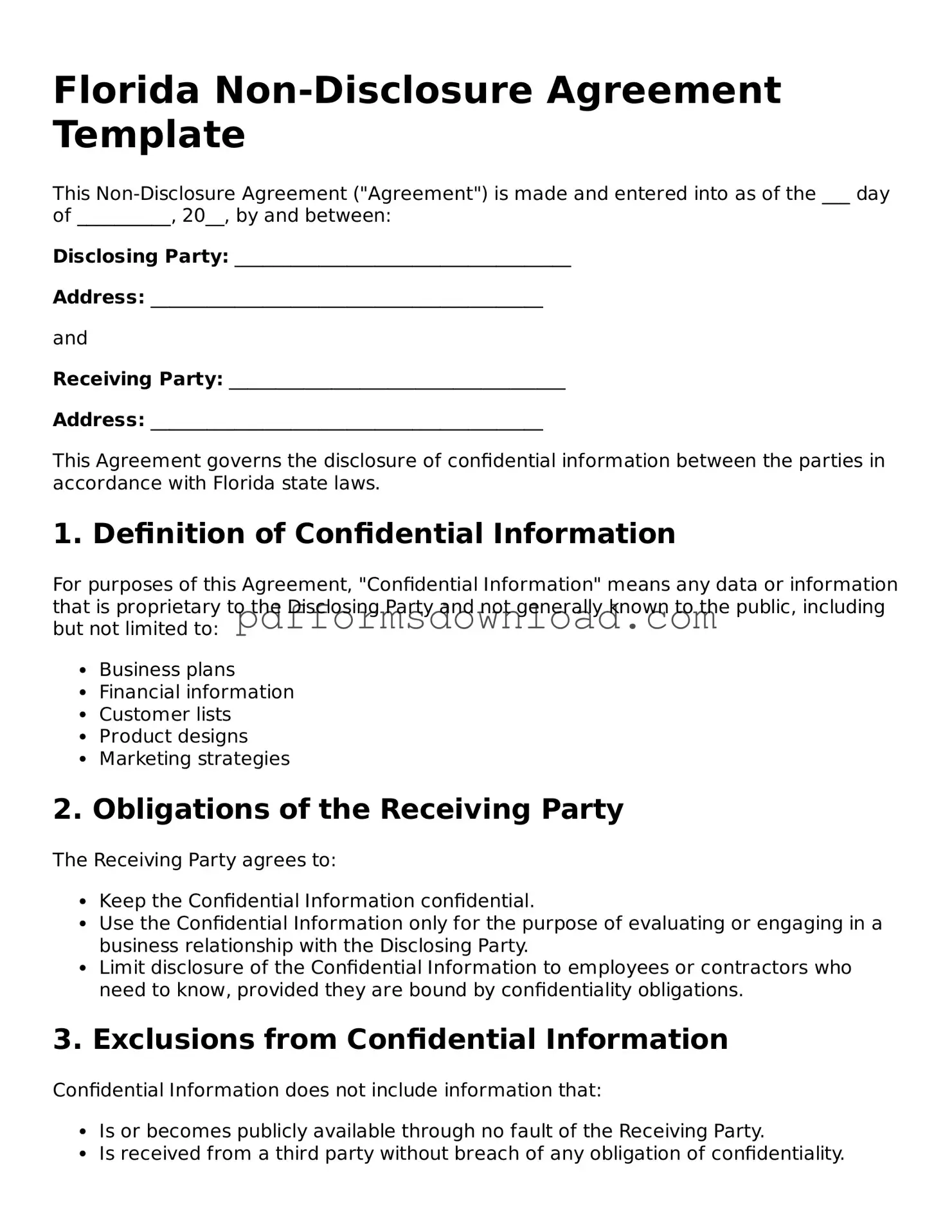What is a Florida Non-disclosure Agreement (NDA)?
A Florida Non-disclosure Agreement is a legal contract that protects confidential information shared between parties. It ensures that sensitive information, such as trade secrets, business plans, or proprietary data, remains private and is not disclosed to unauthorized individuals or entities.
Who typically uses a Non-disclosure Agreement in Florida?
Businesses, entrepreneurs, and individuals commonly use NDAs in Florida. They are particularly useful during negotiations, partnerships, or employment relationships where confidential information may be exchanged. Protecting sensitive information is crucial for maintaining a competitive edge.
What information is protected under an NDA?
Confidential information protected by an NDA can include business strategies, financial records, customer lists, product designs, and any other proprietary information that a party wishes to keep private. The agreement should clearly define what constitutes confidential information.
How long does the confidentiality obligation last?
The duration of confidentiality obligations varies based on the terms outlined in the NDA. Typically, the obligation lasts for a specific period, which can range from a few years to indefinitely, depending on the nature of the information and the agreement between the parties.
Can an NDA be enforced in Florida?
Yes, NDAs can be enforced in Florida courts, provided they meet legal requirements. If one party breaches the agreement, the other party may seek legal remedies, which can include monetary damages or injunctive relief to prevent further disclosure of the confidential information.
Do both parties need to sign the NDA?
Yes, for the NDA to be legally binding, all parties involved must sign the agreement. Each party should receive a copy of the signed NDA for their records. This ensures that everyone is aware of their obligations regarding the confidential information.
What happens if a party violates the NDA?
If a party violates the NDA, the affected party may take legal action. This can include seeking damages for any losses incurred due to the breach or requesting a court order to prevent further disclosure of the confidential information. The specific consequences will depend on the terms of the agreement.
Can an NDA be modified after it is signed?
Yes, an NDA can be modified after it is signed, but any changes must be documented in writing and signed by all parties involved. It is essential to ensure that all modifications are clear and agreed upon to maintain the enforceability of the agreement.
Is it advisable to consult a lawyer when drafting an NDA?
Yes, consulting a lawyer is advisable when drafting an NDA. A legal professional can help ensure that the agreement is comprehensive, enforceable, and tailored to the specific needs of the parties involved. This can prevent potential issues and misunderstandings in the future.
